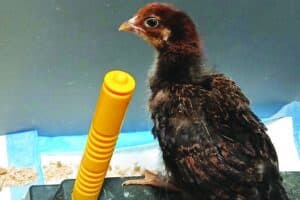The official first day of summer 2021 has come and gone; the days are getting shorter and winter is on its way!Well, that may be rushing it. But before the summer does get away from us, here are some seasonal musings:The heat is on.June ushered in summer with a string of record or near-record high temperatures.Reports show that Colorado has been getting hotter in recent decades, thanks to climate change. Anecdotally, I’ve lived in Colorado for 30-plus years. In the beginning, it seemed like there were just a few days in the summer where I longed for air conditioning at home. Now, out here on the prairie, we have multiple window units cooling off the house in the summer, and this month we’re investing in central air.We live in a manufactured home, and Margaret wondered if that would be an issue in getting central air, but it doesn’t seem to be. Conditioned Air Solutions (conditionedairsolutions.com), based in steamy Alabama, notes that there are more than 10 million occupied manufactured and mobile homes in the U.S. “Heating and cooling these homes usually isn’t much different from heating and cooling site-built homes,” the company assures. ìMost of them have ductwork that can be connected to a central HVAC system, but some do not.”We do. But is our ductwork enough to deliver cooling throughout the house? That’s what Margaret asked the folks at Calibrating Air Heating & Cooling, who are handling our installation. They asked in reply: Does our ductwork adequately deliver heating throughout the house? Well, yes. OK, then, case closed.Hay there!Happiness, Margaret likes to say, is a full hay barn.If so, we’re pretty happy these days; the barn is stuffed with a recent delivery of 100 bales of hay. The horses were quite excited to see the truck pull up, though it’s possible they thought it was carrying other horses.We paid more than we have in past years. We could save money if we didn’t have it delivered and stacked, but our little pickup can’t carry much hay ó and my once-injured rotator cuff can’t handle stacking much hay.At the start of the year, Colorado’s inventory of hay was down about 15% from a year before, according to a report in the Western Livestock Journal. Colorado was one of several hay-producing states reporting a decline due to drought. “Drought conditions in the western third of the state continue to concern hay producers,” according to a recent hay report from the U.S. Department of Agriculture.When supplies are down, prices, of course, are up. One source of free hay for struggling horse owners, the Colorado Horsecare Foodbank, closed at the end of 2019. Mile High Rescue, citing the financial struggles for many caused by COVID-19, is seeking donations for its hay bank; go to https:www.milehighrescue.org/haybank for details.Rock on!Hay isnít the only delivery we’ve had recently; we also just had six tons of small, smooth river rock delivered. It’s for our immediate backyard, home to some plantings, a small patio, a smattering of lawn furniture and a view of Pikes Peak. It’s our little touch of suburbia amid our ìranch land.” For years, we have used red mulch as a decorative item in our landscaping, but between the dogs tearing it up and the prairie winds sweeping it away, it never stays decorative for long. So we’re going the rock route.A rock-vs.-mulch debate online points out the pros and cons of each. Rocks, of course, don’t aid plant growth or soil health like mulch can. But rock is more likely to stay put. We’re prepared to wet down the rocks when needed, though, as they’ll radiate the heat more than mulch.If it doesn’t work out, maybe we can use the rock for that fish pond we have long envisioned.Master of mimicryThe summer guest we wish would stay year-round? The northern mockingbird that entertains us with its wide variety of bird songs from its perch out front.As Audubon (Audubon.org) explains, the mockingbird’s Latin name is Mimus polyglottos, which translates to ìmany-tongued mimic.” John James Audubon writes in his “Birds of America:î ìThere is probably no bird in the world that possesses all the musical qualifications of this king of song, who has derived all from Nature’s self.”In addition to a repertoire of up to 200 or so songs, the mockingbird can imitate man-made noises like machinery. A 2019 study revealed that mockingbirds have been found to mimic a dozen species of North American frogs and toads. (Which reminds me: After such a wet early spring, why haven’t we seen any toads making their summer visits?)According to the National Wildlife Federation, It appears male mockingbirds have two separate, seasonal sets of songs ó one for spring and one for fall. Both males and females sing, but males are louder and sing more often, the federation’s website states. Unpaired males sing 24 hours a day during the breeding season. As the singing has abated somewhat, perhaps there’s been a romantic pairing in our neighborhood.





